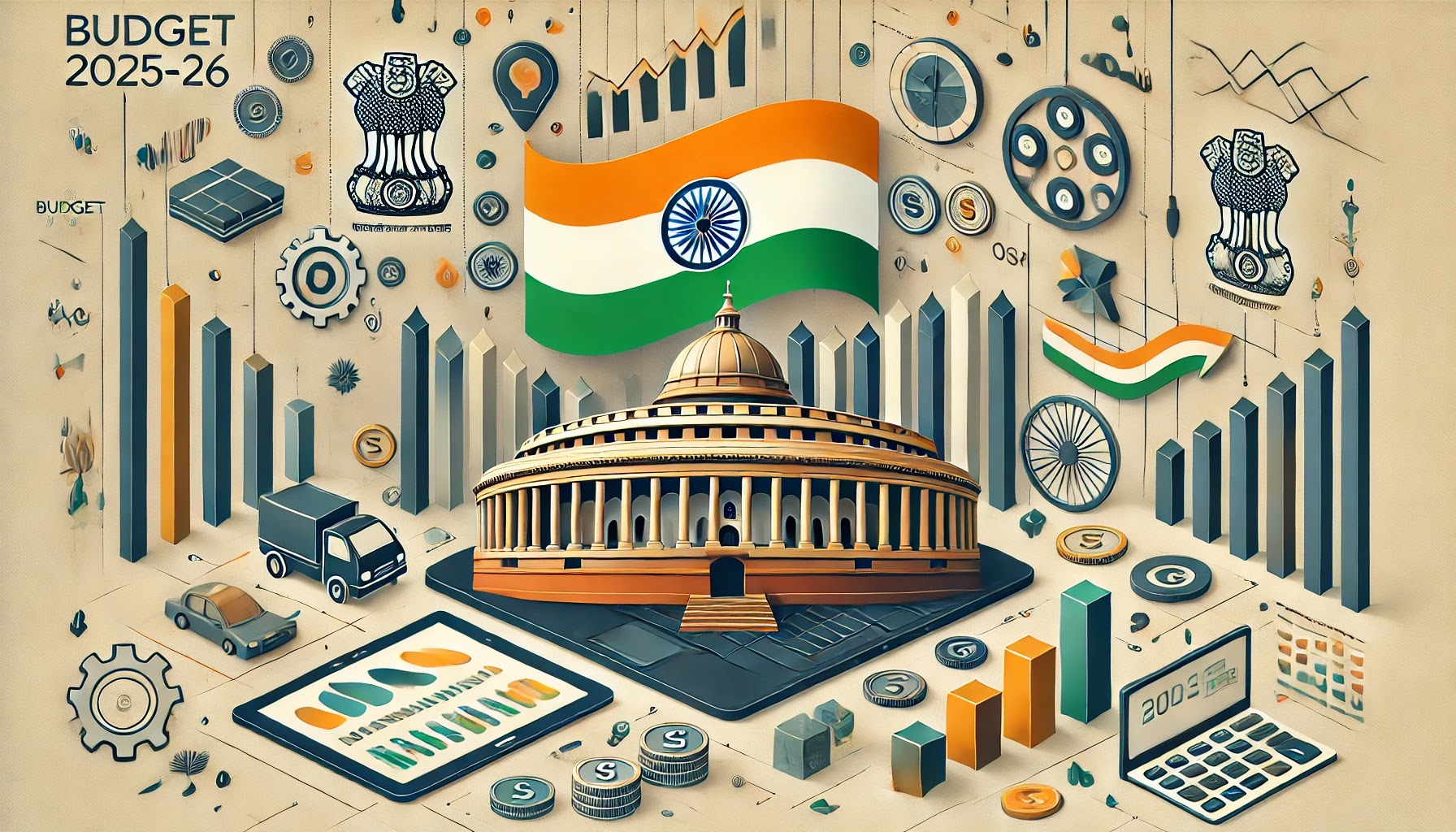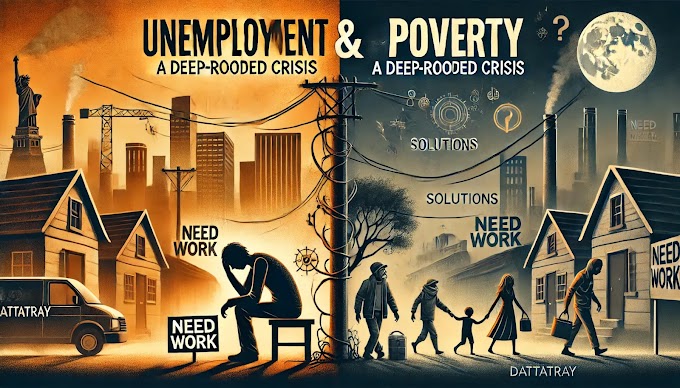Budget 2025-26: Key Highlights and Comprehensive Analysis
Introduction
The Union Budget 2025-26 reflects India’s journey towards becoming a Viksit Bharat (Developed India), focusing on inclusive development, reforms, and innovation. The budget aims to enhance the spending power of the middle class, invigorate private investments, and uplift household sentiments while driving agriculture, MSME, and export growth.
📢 Union Budget 2025-26 Highlights 📢
💰 Tax-Free Income: No tax up to ₹12 lakh
🚀 Infrastructure Boost: ₹1.5 lakh crore to states
🌾 Agriculture: Makhana Board in Bihar, Cotton Mission
📊 MSMEs: ₹10,000 crore Fund of Funds
🧑🎓 Education: 50,000 Atal Tinkering Labs
🔋 Green Energy: Nuclear Energy Mission for 100 GW
📦 Exports: BharatTradeNet for digital trade
Agricultural Reforms and Rural Development
Key Initiatives in Agriculture
- National Mission on High-Yielding Seeds
- Targeting 100 districts to help 1.7 crore farmers.
- Focus on climate-resilient seeds and pest resistance.
- Makhana Board in Bihar
- To improve production, processing, and value addition.
- Prime Minister Dhan-Dhaanya Krishi Yojana
- Developing Agri Districts to promote rural prosperity.
- Mission for Cotton Productivity
- A 5-year mission for improving sustainability and productivity in cotton farming.
- Aatmanirbharta in Pulses
- Special focus on Tur, Urad, and Masoor with an emphasis on protein content and post-harvest management.
- Enhanced Credit through Kisan Credit Cards (KCC)
- Short-term loans of up to ₹5 lakh for 7.7 crore farmers, fishermen, and dairy farmers.
🔥 India's Four Growth Engines 🔥
🌾 Agriculture: Boost to farmers, credit expansion, irrigation projects
🏭 MSMEs: ₹10,000 crore startup fund, ease of doing business
💰 Investment: ₹1.5 lakh crore for infrastructure, green energy initiatives
📦 Exports: BharatTradeNet for trade efficiency, ease of international transactions
Boosting MSMEs and Startups
Revised Classification Criteria for MSMEs
Key Measures
- Credit Cards for Micro Enterprises
- ₹5 lakh limit for micro enterprises on the Udyam portal.
- 10 lakh cards to be issued in the first year.
- Scheme for First-Time Entrepreneurs
- Term loans up to ₹2 crore for 5 lakh new entrepreneurs (focus on women, SC, and ST).
- Focus on Labour-Intensive Sectors
- Footwear & Leather Sectors: To generate 22 lakh jobs and ₹4 lakh crore turnover.
- Toy Sector Development: Building clusters and promoting 'Made in India' toys.
- Make in India Support
- Exemptions for manufacturing capital goods like lithium-ion batteries and LED TV components.
Investments in Human Resource Development
- Saksham Anganwadi & Poshan 2.0
- Focus on nutrition and early childhood education.
- Atal Tinkering Labs
- 50,000 labs to be set up in government schools over the next 5 years.
- Expansion of IIT Capacity
- Increased funding and global partnerships.
- AI in Education
- Establishing a Centre of Excellence in Artificial Intelligence with an outlay of ₹500 crore.
- Medical Education
- 10,000 additional seats with a goal of adding 75,000 seats over the next 5 years.
Infrastructure and Urban Development
- Urban Challenge Fund
- ₹1 lakh crore for cities to become growth hubs with a focus on redevelopment and sanitation.
- Jal Jeevan Mission
- Extended till 2028 for 100% coverage with an enhanced outlay.
- Asset Monetization Plan (2025-30)
- ₹10 lakh crore to be invested in new projects.
- Maritime Development Fund
- ₹25,000 crore corpus with 49% government contribution.
- UDAN Scheme Expansion
- Regional connectivity to 120 new destinations and 4 crore passengers over 10 years.
🚀 Infrastructure & Investment Focus 🚀
Public and private investments are driving economic growth
🏗️ Smart Cities Development
🚆 High-Speed Rail Network
💡 Green Energy & Solar Power
Financial Sector and Tax Reforms
Direct Tax Reforms
- Personal Income Tax Relief
- Tax deduction for senior citizens doubled from ₹50,000 to ₹1 lakh.
- TDS on rent increased from ₹2.4 lakh to ₹6 lakh.
- Taxpayers allowed to claim the annual value of 2 self-occupied properties.
- New Income Tax Bill
- Simplifying tax structures and reducing litigation.
Indirect Tax Reforms
- Rationalization of Customs Tariffs
- Removal of 7 tariff rates for industrial goods.
- Focus on trade facilitation and export promotion.
- Exemptions for Lifesaving Medicines
- 36 lifesaving drugs added to the exempted list.
🏦 New Income Tax Slabs 2025-26 🏦
| Income Range | Tax Rate |
|---|---|
| ₹0 - ₹4 lakh | Nil |
| ₹4 - ₹8 lakh | 5% |
| ₹8 - ₹12 lakh | 10% |
| ₹12 - ₹16 lakh | 15% |
| ₹16 - ₹20 lakh | 20% |
| ₹20 - ₹24 lakh | 25% |
| Above ₹24 lakh | 30% |
Deficit and Fiscal Health
Deficit Trends
Where the Rupee Comes From and Goes To
Rupee Comes From
- Income Tax: 22%
- Borrowing and Liabilities: 24%
- GST and Other Taxes: 18%
- Corporation Tax: 17%
Rupee Goes To
- States' Share of Taxes and Duties: 22%
- Interest Payments: 20%
- Defence: 8%
- Major Subsidies: 6%
💸 How the Government Earns and Spends the Rupee
| Source of Income | % of Total Revenue |
|---|---|
| Income Tax | 22% |
| Borrowing and Liabilities | 24% |
| Expenditure | % of Total Expenditure |
| States' Share of Taxes | 22% |
| Interest Payments | 20% |
Conclusion
The Union Budget 2025-26 is a visionary document, focusing on growth, inclusion, and resilience. With targeted investments in agriculture, MSMEs, infrastructure, and innovation, it lays the foundation for a self-reliant, globally competitive India.









.png)

.png)


.png)
0 Comments